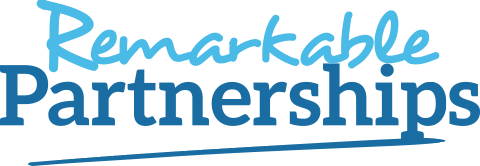If you want to build corporate partnerships it can be tempting to contact lots of random companies and see if any of them are interested. This is like throwing lots of mud at a wall and hoping that some of it sticks. The problem with this approach is you are counting on getting lucky and you will probably waste lots of time.
We recommend you take a more focused approach by looking for companies that are your ideal prospects. A great way to do this is to identify your ideal prospect criteria. In this blog we share our five recommended features of an ideal corporate prospect.
Contacts
Having a senior contact at a company can make a corporate partnerships approach much easier. Not only are they more likely to open your email, but you come recommended. This means they are more likely to meet – and ultimately partner – with your organisation. Think of your contact as rolling out a red carpet.
When Momentum Children’s Charity was looking for their dream partners, they realised they had key contacts at ICAP – which meant they were a top prospect.
These two champions were identified – a broker whose daughter had been supported through the charity, and the Chief Finance Officer who knew the staff team. By approaching ICAP through these champions, they were able to build a successful partnership – funding a family support worker to provide support to 40 families whose child has cancer.
Shared Purpose
One of the underlying characteristics of high performing business and charity partnerships is having a shared purpose. You need to choose business partners who are the right fit for your organization, sharing common principles with you and your charity’s culture. This makes it easier for them to identify with your social mission, and define the overall purpose of the partnership.
When looking for prospective partners, therefore, look at a company’s mission statement. If you were to put your mission statement and their mission statement into a venn diagram, you want to see an obvious overlap. You want a customer to look at the partnership and think “that makes sense”.
Resources
When you think of your ideal corporate prospect, it is vital that they have sufficient resources to help your charity tackle your problems. Can they help you put a dent in your mission? The most obvious resource is money, so we recommend you find out their latest profit figures. However, companies can help in many ways other than just money, so we also recommend you find out how many employees and customers they have. After all, for many charities one of their greatest problems is a lack of awareness, so companies with a wide customer base can significantly increase your reach.
You should also consider whether they have the expertise to help you tackle your problems. For example, during the pandemic lockdown, Scottish Gas helped CHAS (Children’s Hospices Across Scotland) by using their network of engineers to deliver essential items to children with life-shortening conditions and their families.
Benefit to them
Having considered whether they have resources to help your charity – you also need to consider how much you can benefit them. This is the true meaning of partnership: a win-win.
For example, if you are looking at companies in the finance industry – you might consider that one of their big problems is in gender equality and pay. What can your charity do to help them address this issue – can you help them win the battle for talent?
Identifying this will ensure you make a partnership offer, rather than a partnership ask, strengthening your chances of success.
Realistic
Finally, you need to consider whether your prospect is realistic. In their book, Blue Ocean Strategy, Renée Mauborgne and W. Chan Kim explained there are two places you can fish. The red ocean and the blue ocean.
In the red ocean are all the big fish. Think of HSBC, Tesco and Deloitte. In the blue ocean are all the medium and small fish. These companies can still be a decent size, but aren’t household names.
The reason that the red ocean is red, they explain, is the blood of everyone fighting to fish there. So focusing on realistic prospects in the blue ocean will not only be more enjoyable – you’ll also catch far more fish.
Conclusion
At Remarkable Partnerships, we like to think of these five factors as the “five stars of a corporate prospect”. If you are able to find a five star prospect – you know you are onto a winner.
For more information on how to contact map within your organisation, how to identify shared purpose and how to fish in the blue ocean, consider booking onto our New Business Crash Course: https://www.remarkablepartnerships.com/event/new-business-crash-course/


Leave a comment